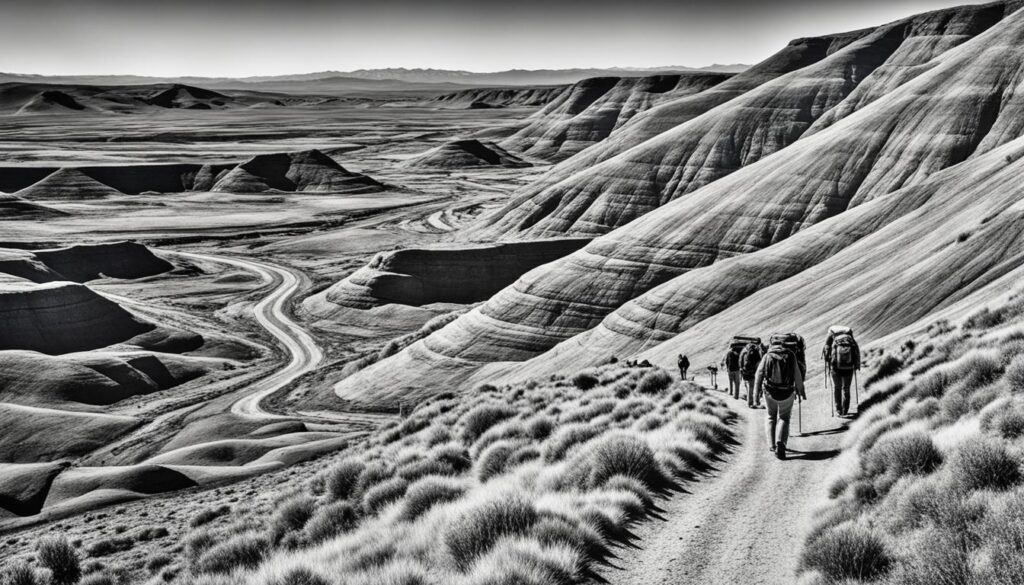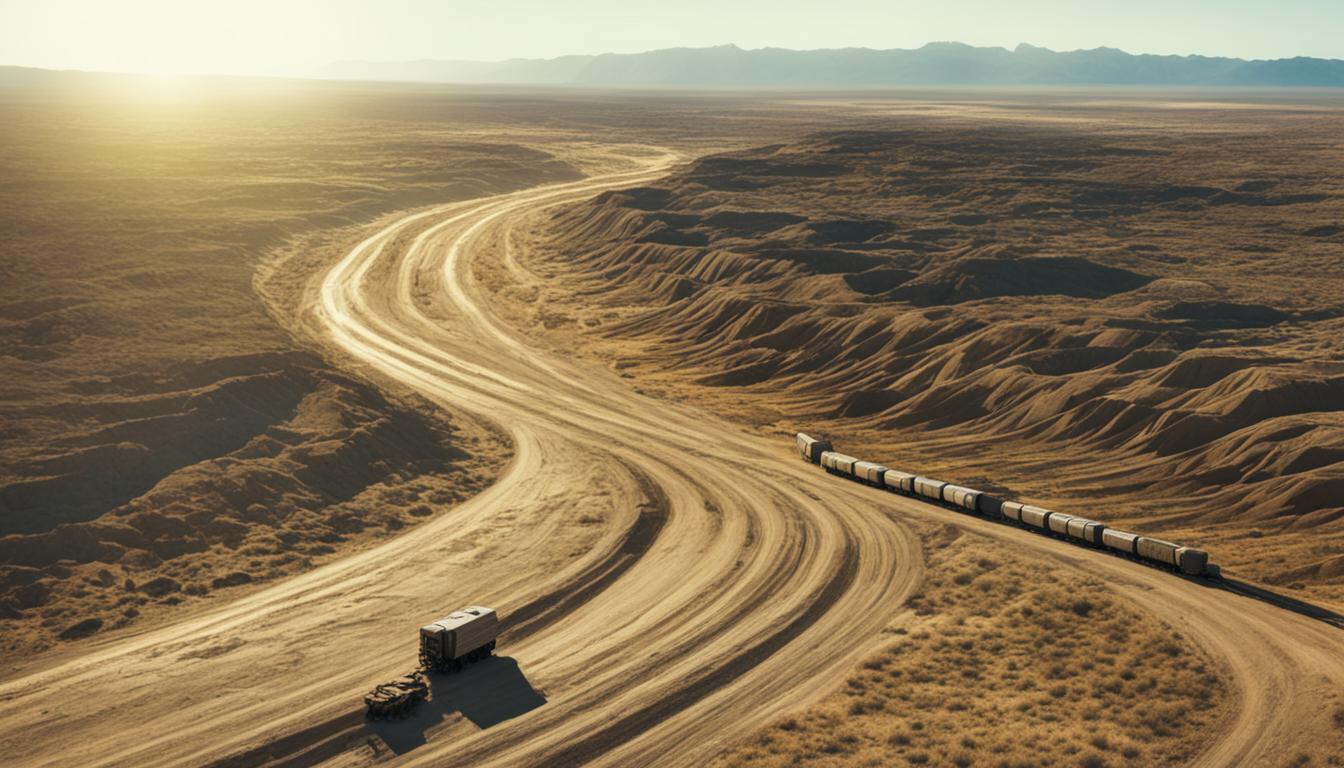The Oregon Trail was a crucial path for pioneers from 1841 to 1861. It connected the Midwest to Oregon and California. Over 300,000 people traveled this challenging route, seeking new opportunities in the American West.
Thousands of wagon wheels and hooves left their mark on the land. They created visible trails in hard rock and wider swales in softer soil. These marks can still be seen today, showcasing the massive westward movement.
Oregon Trail ruts look different based on soil type and water erosion. Some areas have obvious ditches, while others show wider, shallower drainages. Historians estimate that about 300 miles of the original 2,000-mile trail remain untouched.
Much of the trail has been lost to time or development. Roads and highways often cover the popular route. Today, people can walk or hike along these historical remnants.
Visitors can observe the swales, which are slight sunken depressions covered in grass. These serve as a reminder of the pioneering spirit that shaped America. It’s important to explore these areas respectfully.
Key Takeaways
- The Oregon Trail was a critical route for pioneers, traders, and gold seekers heading west from 1841 to 1861
- Over 300,000 emigrants traveled the trail, leaving visible wagon ruts and swales in the landscape
- Trail ruts vary in appearance based on soil type and erosion, ranging from distinct ditches to shallow drainages
- An estimated 300 miles of the original 2,000-mile trail remain untouched, while much has been lost to development
- Visitors can respectfully walk or hike along the remaining trail ruts to experience this piece of American history
Thousands of Pioneers Left Their Mark on the Oregon Trail
Pioneers on the Oregon Trail often carved their names into rocks at key landmarks. These pioneer inscriptions serve as lasting records of those seeking a better life. They document the passage of thousands who traveled west in the mid-1800s.
Independence Rock in Wyoming was a famous landmark known as the “register of the desert.” William Sublette named it in 1830 after arriving with his wagon train on July 4th. Countless pioneer inscriptions can still be seen on Independence Rock today.
Alcove Spring in Kansas was another popular stop for emigrants. Edwin Bryant of the Donner-Reed Party named it in 1846. He carved “Alcove Springs” into the rocks, and his party’s inscriptions remain visible.
A toll bridge helped wagons cross Rock Creek in Nebraska. Fees ranged from 10 to 50 cents based on load size and ability to pay. Nearby, Register Cliff in Wyoming bears many pioneer names from the Oregon Trail journey.
These stone carvings remind us of the pioneers’ challenges, hopes, and dreams. At wagon train camps, their inscriptions connect us to America’s westward expansion. Even after 175 years, we can still feel their experiences through these marks.
Visible Oregon Trail Ruts: Where to See History Carved into the Landscape
Explore Oregon Trail ruts locations firsthand at several notable sites. In Kansas City, Missouri, see swale ruts at Red Bridge Crossing. These were created by wet wagon wheels eroding the hillside after crossing the Big Blue River.
Rock Creek Station in Nebraska showcases deep wagon ruts spanning 1,600 feet. This site had a toll bridge for wagons to cross the creek easily.

Guernsey, Wyoming, offers a striking example of the Oregon Trail’s impact. Soft sandstone has been worn down by countless wagons, creating five-foot-deep paths. Visitors can walk through these ruts for an immersive pioneer experience.
In Idaho, Big Hill marks the longest and steepest climb on the Oregon Trail. Wagon tracks are still visible on this challenging passage. View the hiking trails from afar to grasp the climb’s magnitude.
Near the trail’s end in Oregon, the National Historic Oregon Trail Interpretive Center awaits. Below it, a seven-mile stretch of wagon ruts crosses Virtue Flat. This area shows early “passing lanes” where faster wagons could overtake slower ones.
One of the final sets of wagon ruts runs along Oregon’s Columbia River Gorge. These ruts stretch up a cliff for about a mile. They lead to a scenic river overlook, reminding us of the pioneers’ journey.
Preserving and Experiencing the Oregon Trail Today
Many trail sites protect the Oregon Trail’s historical resources. Visitors should treat these places with care. The National Historic Oregon Trail Interpretive Center offers a unique pioneer life experience.
Visitors can explore 4 miles of trails showcasing wagon ruts. They can also see remnants of an old gold mine. Scenic viewpoints retrace the pioneers’ experiences.
Oregon Trail ruts are visible off Highway 86 near the Interpretive Center. A roadside historical sign marks the spot. Walking these ruts immerses visitors in the pioneers’ landscape.
This experience connects us to a pivotal period in American history. It helps us imagine the challenges pioneers faced. We gain appreciation for their sacrifices on the journey west.
Preservation efforts maintain untouched portions of the trail. This ensures future generations can learn from this iconic piece of history. Visiting Oregon Trail sites helps us understand 19th-century westward expansion.
We can better grasp the pioneers’ stories through historic trail interpretation. Experiencing the Oregon Trail connects us with our shared past. It showcases the determination of those who came before us.

Leave a Reply